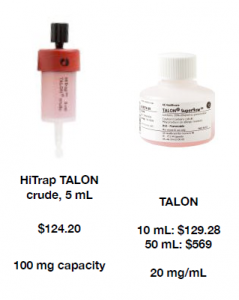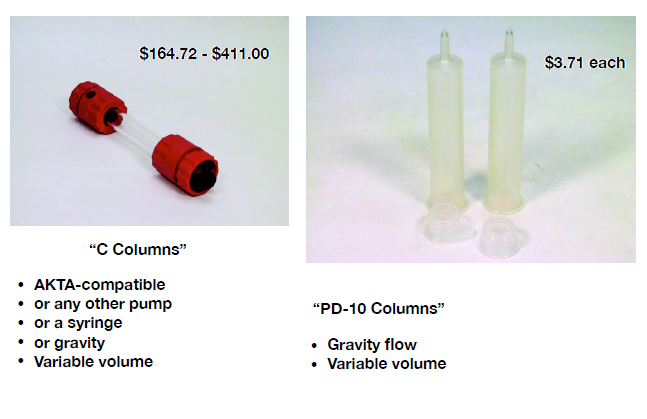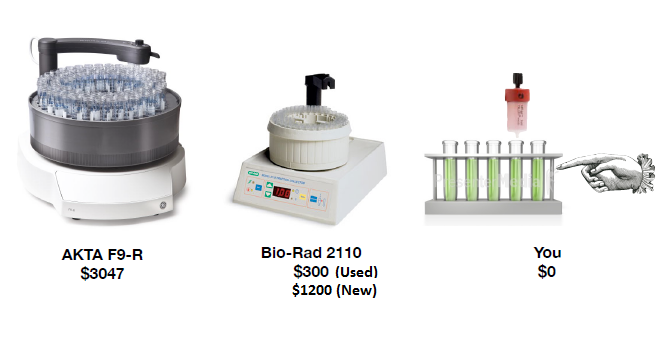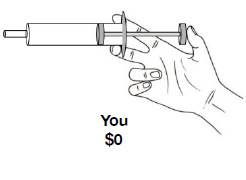Welcome to the first Technical Tuesday! Where we try to dive a little deeper into the actual costs involved in particular scientific techniques. We hope to show where you can save money, and what you might lose by saving that money. Today’s topic is protein purification by columns thanks to Dr. Marc Ridilla who provided most of the information and all the graphics in this post..
Nowadays purifying proteins with columns on an AKTA allows for a lot of control in flow, buffer mixing, and data collection. Yet AKTA’s are expensive and often that sort of feedback isn’t necessary.
Either way, you might consider making your own columns. A 5 mL HiTrap TALON column goes for over $100 right now, while TALON media comes it at a similar price every 10 mL.

You can buy a C Column for a few hundred dollars to use with the Talon medium, and this gives you more flexibility, you can now create columns of variable volume. If you don’t intend to use an AKTA, you might as well just use PD-10 columns.

Which brings us of course to the real point, in that an AKTA is necessarily the best way to run a column a lot of time. As far as cost goes, the cheapest way to run a column, is you (or gravity).

and the cheapest way to collect fractions, is you.

Of course, if you are collecting fractions manually and pumping manually you will lose a lot of time. We think a happy middle ground consists of a peristaltic pump attached to self-made columns. This gives you a lot of control and you can get precise scientific protein purifications for just $500

The benefit to this approach is you already have AKTA compatible columns if you decide to spring for something like that later. If you buy (or make) a double set of programmable pumps you’ll even be able to run elution gradients. Though this will cost you a bit more money.
Dr. Peter Foster also notes that by working with syringe pumps directly instead of an AKTA you have no dead volume, which means less time in each step which means less time for those tricky proteins to degrade.
